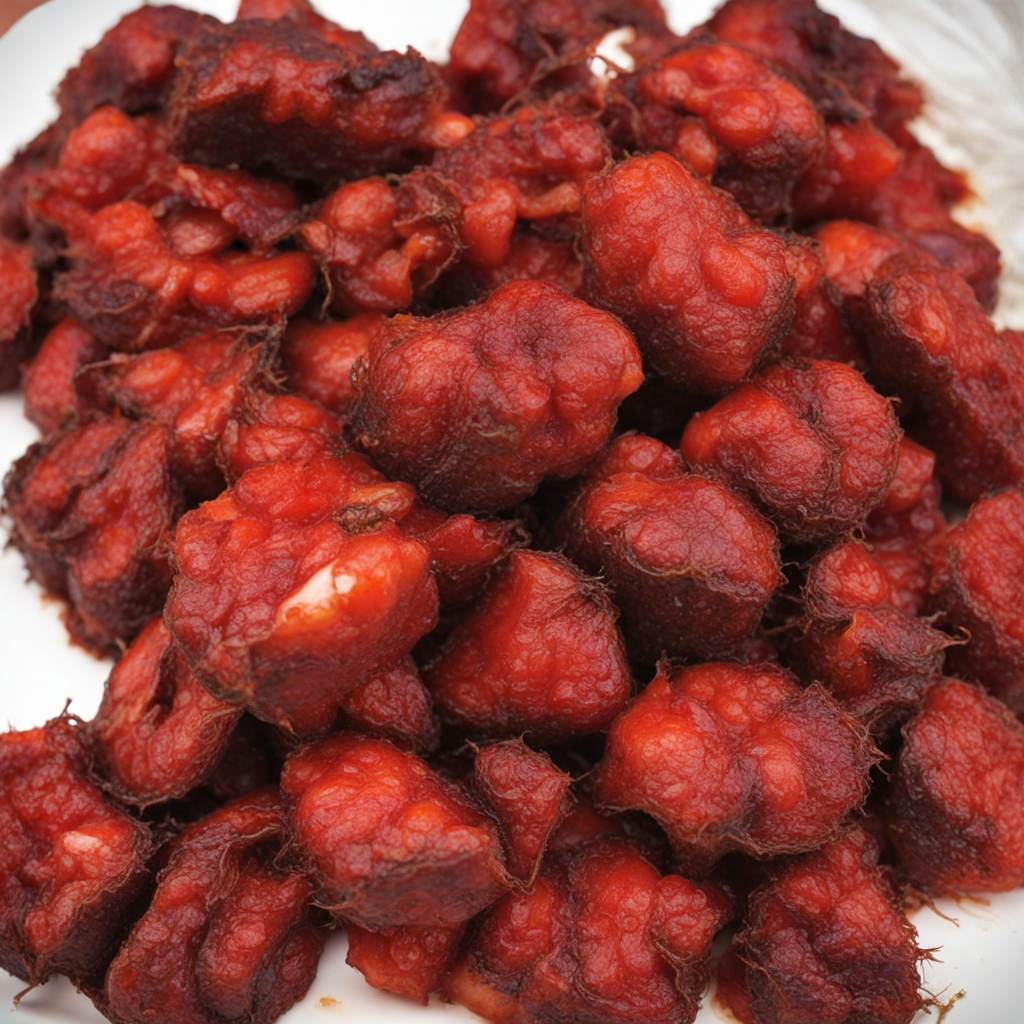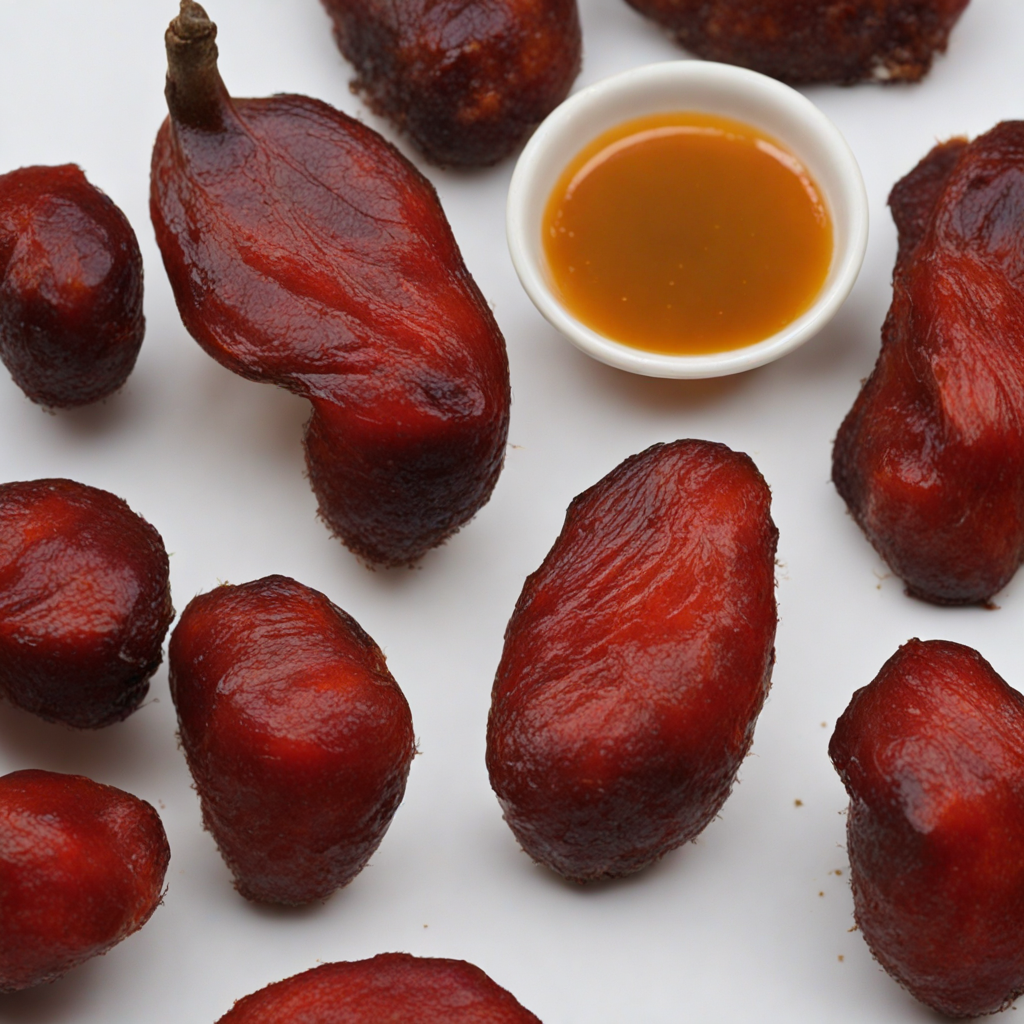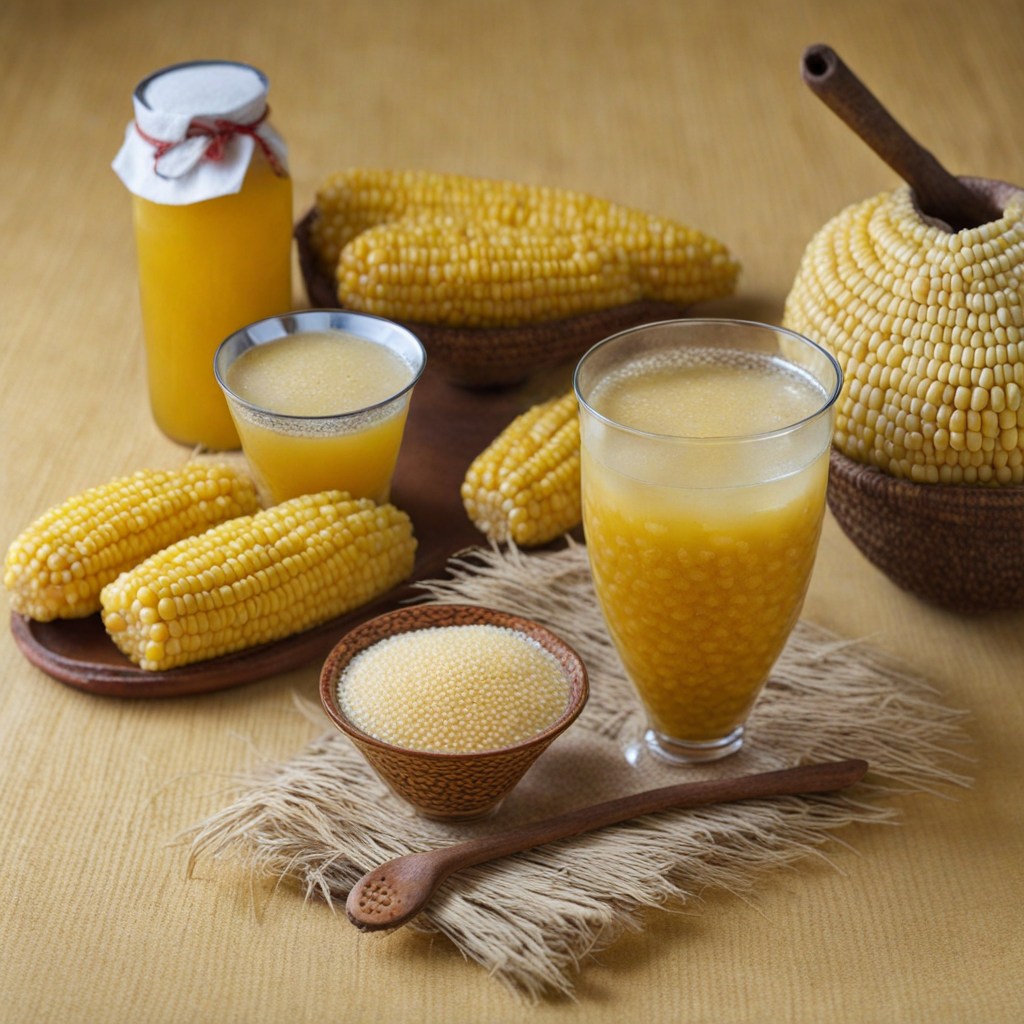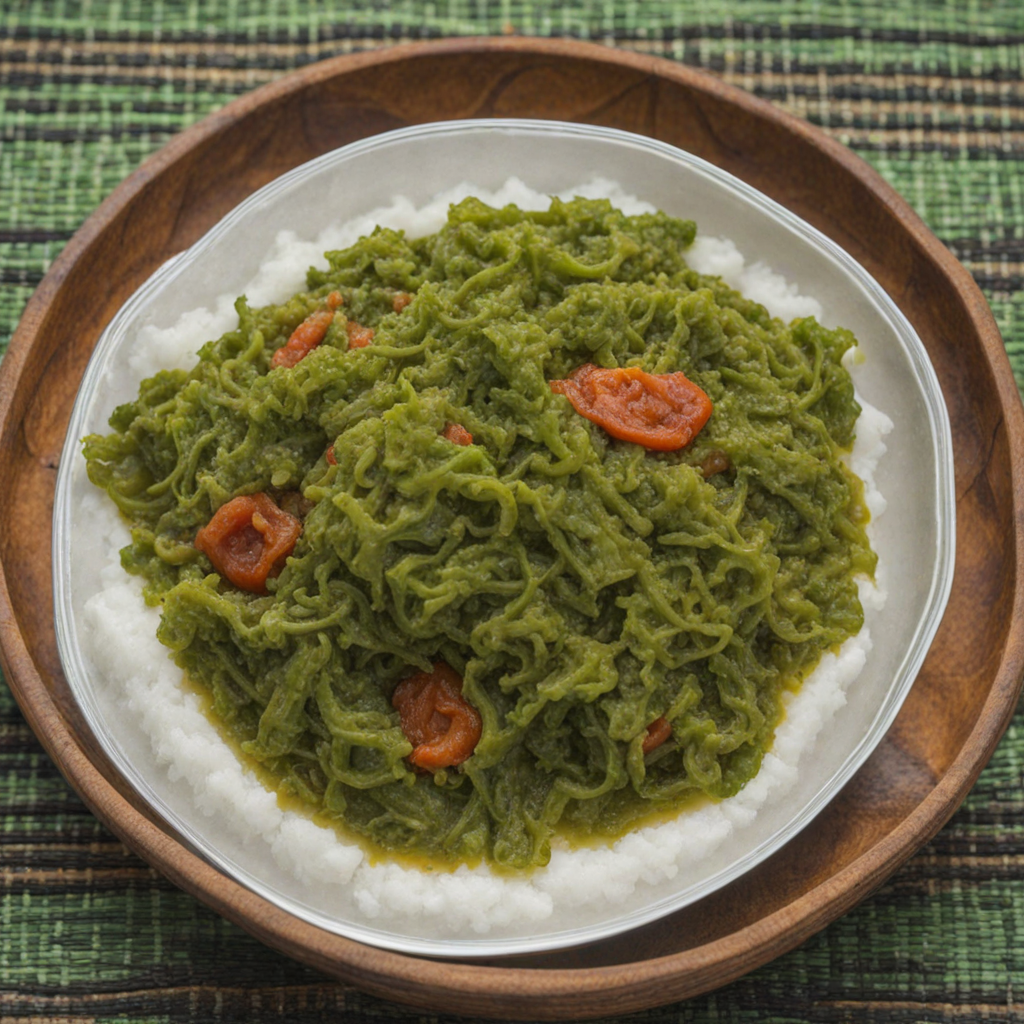Funje de Dendem
Funje de Dendem is a delightful Angolan dish that offers a unique taste experience, characterized by its smooth and creamy texture. Made primarily from ground cassava flour, known as 'fuba,' it is cooked with water to create a thick, porridge-like consistency. The dish is often enriched with the addition of palm oil, which gives it a vibrant yellow hue and infuses it with a rich, nutty flavor. This staple food is not only filling but also serves as a versatile base for a variety of accompaniments, making it a beloved choice in Angolan cuisine. The flavor profile of Funje de Dendem is subtle yet satisfying, as the natural earthiness of the cassava pairs beautifully with the aromatic notes of palm oil. The dish is typically enjoyed with a selection of sauces, stews, or grilled meats, which enhance its taste and create a harmonious blend of textures. The simplicity of Funje allows it to absorb the flavors of the dishes it accompanies, making each bite a delightful combination of ingredients that reflect the rich culinary heritage of Angola. Funje de Dendem is more than just a meal; it embodies the spirit of Angolan culture and hospitality. Served at gatherings and special occasions, it brings people together to share in the experience of savoring its comforting taste. As you explore this dish, you'll discover not only the warmth of its flavors but also the stories and traditions that come alive with every serving, inviting you to dive deeper into the vibrant world of Angolan cuisine.
How It Became This Dish
Funje de Dendem: A Culinary Journey through Angola #### Origins Funje de Dendem, often simply referred to as "funje," is a beloved dish from Angola, a country situated on the southwestern coast of Africa. The dish is a variation of the broader category of "funje," which generally refers to a type of porridge made from cassava flour. In Angola, "funje de dendem" specifically incorporates palm oil (dendem) into the mix, giving it a rich flavor and a vibrant orange hue. This dish is deeply rooted in the agricultural practices and culinary traditions of the Angolan people. The origins of funje can be traced back to the indigenous peoples of Angola, who have cultivated cassava for centuries. Cassava is a staple crop in many African nations due to its hardiness and adaptability to various climates. It is particularly valued for its ability to thrive in poor soil conditions, making it a reliable source of sustenance. The early Angolans recognized the potential of cassava, using its roots to prepare various dishes, including the popular funje. #### Cultural Significance Funje de Dendem is not just a dish; it is a cultural symbol for Angolans. It represents a connection to tradition, community, and the land. Traditionally, it is prepared for both everyday meals and special occasions, such as family gatherings, weddings, and festivals. The preparation of funje often involves the participation of multiple family members, reinforcing communal bonds and passing down culinary knowledge through generations. In Angolan culture, food is an integral part of social life. The act of sharing a meal is seen as a way to strengthen relationships and foster a sense of belonging. Funje de Dendem serves as a unifying dish, often accompanying a variety of stews and grilled meats, making it a centerpiece at communal feasts. Its nutritional value, derived from cassava and palm oil, also makes it an essential part of the Angolan diet, providing energy and sustenance to those who consume it. Moreover, the dish highlights the importance of palm oil in Angolan cuisine. Palm oil, extracted from the fruit of the oil palm tree, is a staple cooking fat in many African countries. Its rich flavor enhances various dishes, while its vibrant color adds visual appeal. The use of palm oil in funje de dendem reflects the local agricultural practices and the resources available in Angola, showcasing the ingenuity of the Angolan people in utilizing their natural environment. #### Development Over Time As Angola has evolved over the years, so too has its cuisine, and funje de dendem is no exception. The dish has undergone various transformations influenced by historical events, colonization, and globalization. The Portuguese colonization of Angola, which lasted for nearly five centuries, introduced new ingredients and cooking methods to the region. This encounter with European culinary practices led to the incorporation of additional flavors and techniques into traditional Angolan dishes, including funje. During the colonial era, the Angolan people adapted their cooking to include ingredients such as tomatoes, onions, and garlic, which were brought by the Portuguese. These ingredients have since become staples in Angolan cuisine and have found their way into contemporary preparations of funje de dendem. The blending of indigenous and European culinary practices reflects a broader theme in Angolan history, where resilience and adaptability have been key to cultural survival. Following Angola's independence in 1975 after a long struggle against colonial rule, there was a resurgence of interest in traditional foods, including funje de dendem. The post-colonial period saw Angolans reclaiming their culinary heritage, emphasizing locally sourced ingredients and traditional cooking methods. Funje de dendem became a symbol of national identity, representing a return to cultural roots and an assertion of Angolan pride. In recent years, globalization has continued to influence the preparation and consumption of funje de dendem. With the rise of the internet and social media, traditional recipes have gained visibility, leading to a renewed interest in Angolan cuisine both domestically and internationally. Chefs and food enthusiasts have begun to explore and share their interpretations of funje, experimenting with flavors and presentations while staying true to its traditional essence. Despite these changes, the core of funje de dendem remains the same. The dish is still prepared using cassava flour and palm oil, often cooked to a smooth, thick consistency that is both comforting and satisfying. It is typically served with a variety of accompaniments, such as spicy stews made with fish, chicken, or vegetables, allowing for a diverse range of flavors and textures. #### Funje de Dendem in Modern Angola Today, funje de dendem is enjoyed across Angola and beyond, with its popularity extending to Angolan diaspora communities around the world. The dish has become a staple in Angolan restaurants, where it is often featured on the menu to introduce newcomers to the richness of Angolan cuisine. Additionally, food festivals and cultural events celebrating Angolan heritage frequently highlight funje de dendem, showcasing its significance as a national dish. The preparation of funje de dendem has also become a means of preserving cultural identity among younger generations. Many Angolans take pride in learning how to make funje from their elders, ensuring that the rich culinary traditions are passed on. This act of cooking together fosters a sense of community and connection to one's heritage, reinforcing the role of food as a vehicle for cultural expression. In conclusion, funje de dendem is more than just a dish; it is a representation of Angola's history, culture, and resilience. From its origins rooted in indigenous agricultural practices to its evolution through colonization and globalization, funje de dendem embodies the spirit of a nation that has faced challenges yet continues to thrive. As Angola moves forward, this iconic dish will undoubtedly remain a cherished part of its culinary landscape, symbolizing the strength and unity of its people.
You may like
Discover local flavors from Angola







